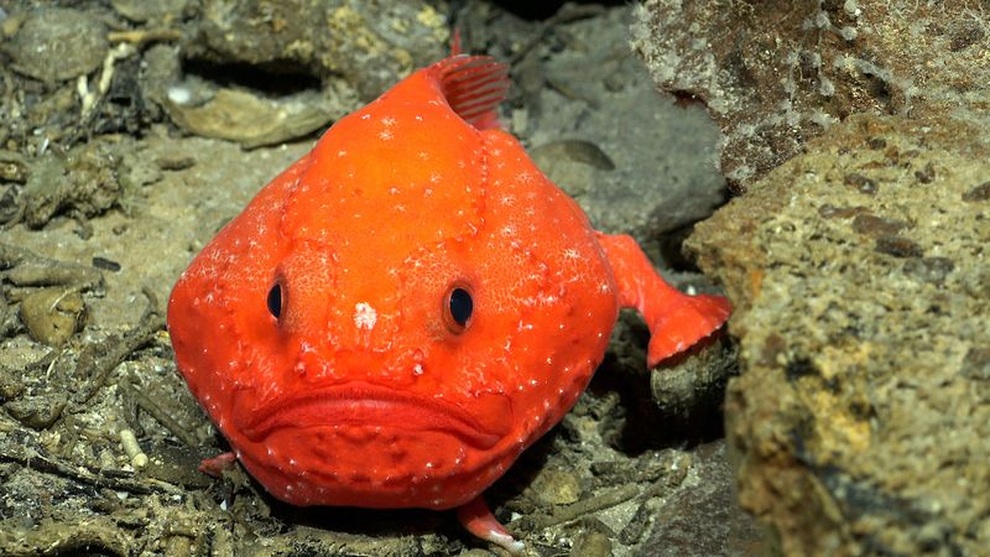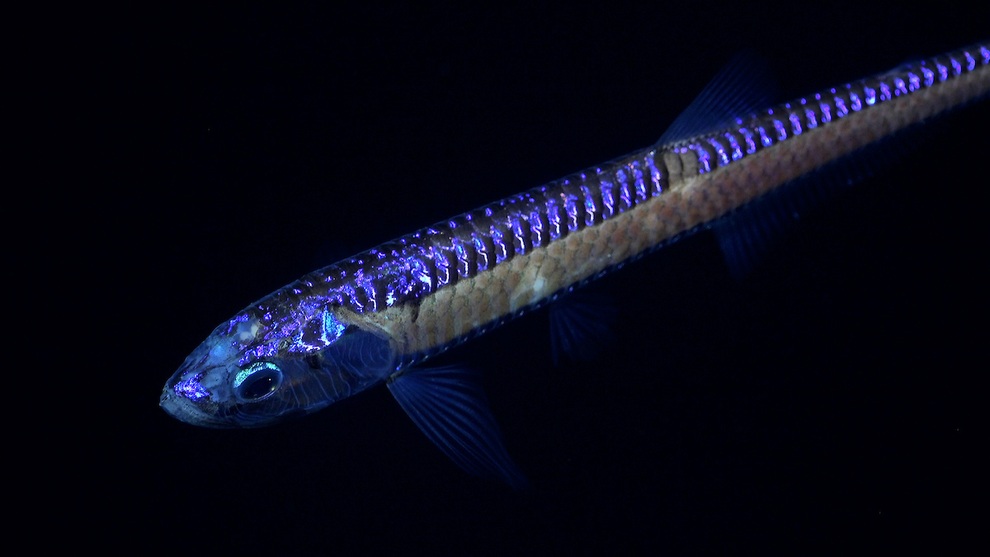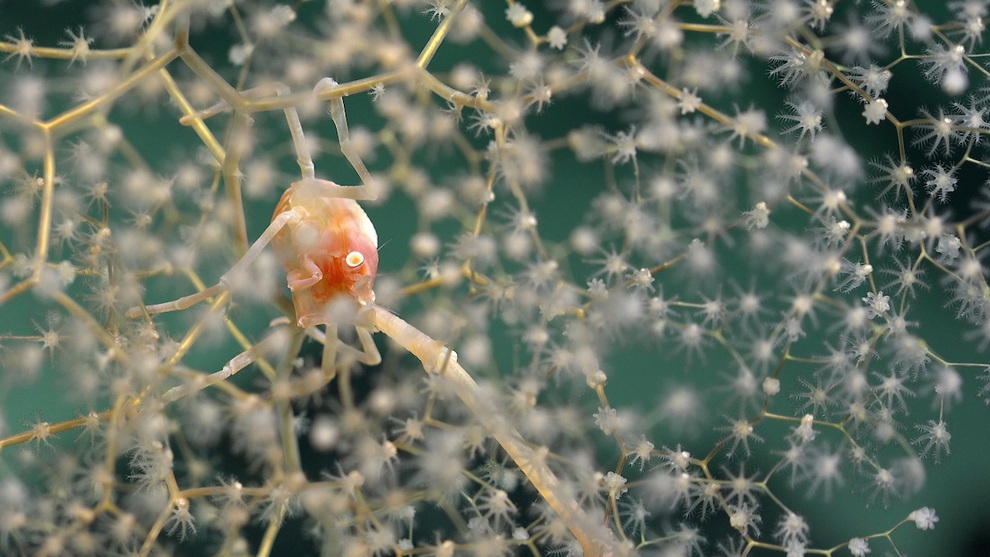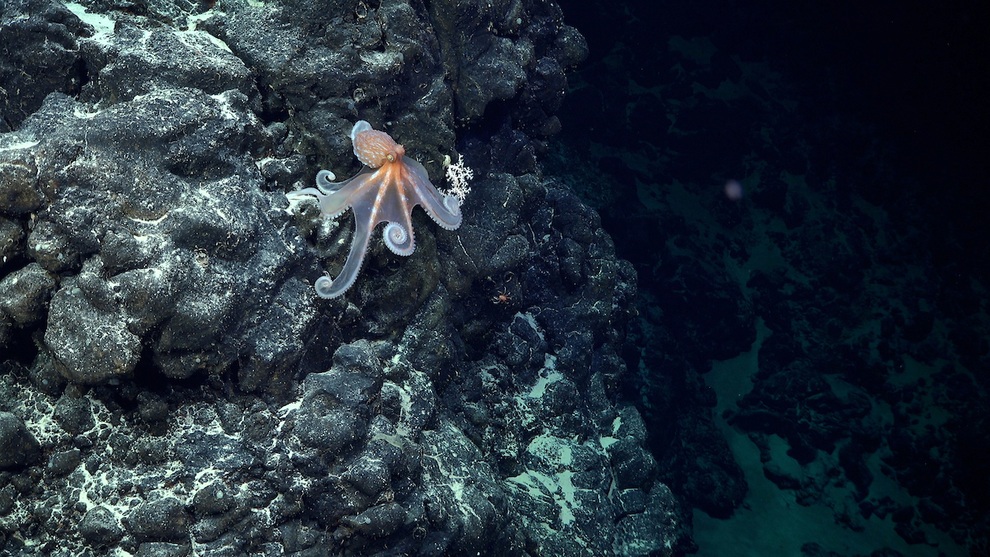
This image of a Chaunax (a bony fish related to the sea toad family) was captured during a dive near the southwestern flank of Rapa Nui (Photo: ROV SuBastian/Schmidt Ocean Institute).
Dozens of new species have been discovered along the Salas y Gómez seamounts off Rapa Nui, also known as Easter Island, a Chilean island famous for its giant stone statues of the Moai.
The new creatures found here include a wide variety of species including squid, fish, corals, mollusks, starfish, glass sponges, sea urchins, crabs and squat lobsters.
They were discovered during a recent expedition by the Schmidt Ocean Institute's R/V Falkor, which is surveying environments and ecosystems in the Pacific Ocean , far off the coast of Chile.
At Salas y Gómez, part of a mountain range of 110 submarine volcanoes, the team identified 160 different species, at least 50 of which are believed to be new to science .

A deep-sea dragonfish, a master predator with a jaw filled with fangs, was found on the southeastern flank of an unexplored and unnamed seamount (Photo: ROV SuBastian/Schmidt Ocean Institute).
They also accidentally discovered the deepest known photosynthetic animal ever found: Leptoseris, also known as the wrinkled coral.
“Observing distinct ecosystems on individual seamounts highlights the importance of protecting the entire range, not just the mountain itself,” said Dr Erin E Easton, Schmidt scientist and Assistant Professor at the University of Texas Rio Grande Valley.
“We hope the data collected from this expedition will help establish new marine protected areas, including in the open ocean in the Salas y Gómez Range,” said Easton.

A Chrysogorgia coral and squat lobster are found on the northern slope of Motu Motiro Hiva, an uninhabited island along the Salas y Gómez range (Photo: ROV SuBastian/Schmidt Ocean Institute).
Along with monitoring living organisms, the expedition conducted hydrographic surveys of the geographical features of the seabed. A total of 78,000 square kilometers of seabed were mapped, including six previously unrecorded seamounts.
Seamounts are steep-sided underwater mountains, often the remains of extinct volcanoes. In the open ocean, they serve as cradles of biodiversity, providing a surface and habitat for deep-sea corals, sponges, fish, cephalopods, and crustaceans.

An octopus individual is seen on the southeastern flank of an unexplored and unnamed seamount located within Chilean territory, east of Motu Motiro Hiva (Photo: ROV SuBastian/Schmidt Ocean Institute).
Seamounts also act as important "stopover points" in the migration of marine life such as whales, sea turtles, swordfish, tuna and sharks.
This is the Schmidt Ocean Institute's second expedition to Salas y Gómez this year. Their first trip to the area discovered about 100 new species.
More than 50 new species discovered in marine ecosystems
Researchers describe the area's ecosystem as "very pristine" - and they now have enough evidence to show that conservation efforts are needed to maintain this unique biodiversity.
"The incredible habitats and fauna revealed by the two expeditions are a clear demonstration of how little we still know about this remote region," said Dr Javier Sellanes of the Universidad Católica del Norte.
Source


![[Photo] General Secretary To Lam chairs a working session with the Central Internal Affairs Commission](https://vphoto.vietnam.vn/thumb/1200x675/vietnam/resource/IMAGE/2025/5/22/3b7790f499da45b2803d8ae253207ef1)

![[Photo] T&T 1 and Ho Chi Minh City 1 People's Police Teams won the men's and women's team championships](https://vphoto.vietnam.vn/thumb/1200x675/vietnam/resource/IMAGE/2025/5/22/39db06ae67cb4001b7a556e8d9a56d07)
![[Photo] Prime Minister Pham Minh Chinh chairs meeting on draft Resolution of National Assembly on International Financial Center in Vietnam](https://vphoto.vietnam.vn/thumb/1200x675/vietnam/resource/IMAGE/2025/5/22/d398664ff1a140629169ea5a24e1b4d0)
![[Photo] Press delegation meeting to visit Truong Sa and DK1 Platform](https://vphoto.vietnam.vn/thumb/1200x675/vietnam/resource/IMAGE/2025/5/22/6b8d232877ec421a9e8187d83b9f8006)












































































![[Podcast] Week introducing more than 500 OCOP products in Hanoi](https://vphoto.vietnam.vn/thumb/402x226/vietnam/resource/IMAGE/2025/5/22/d144aac2416744718388dbae3260e7fd)





Comment (0)